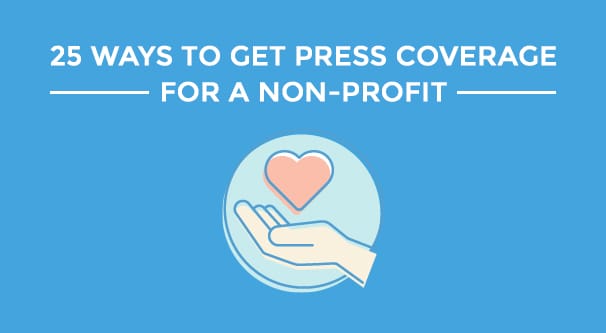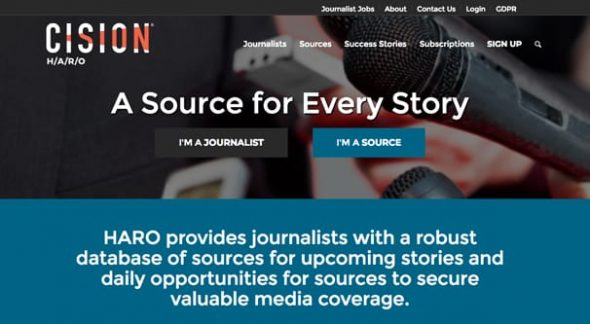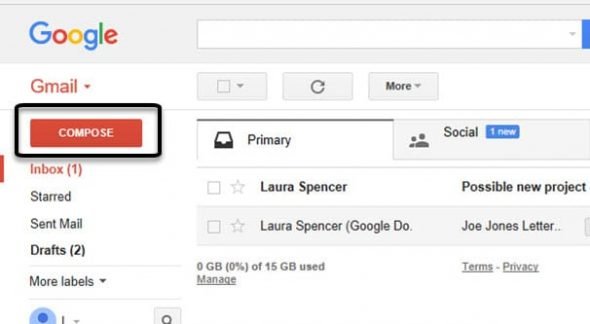One of the biggest problems in the nonprofit world is awareness. There are thousands upon thousands of companies competing for the attention of your audience every waking second of the day. Many of these companies have things like “communications directors” or “advertising agencies” or “budgets”. It’s hard to compete when you’re operating with a shoestring budget and, perhaps, your cause isn’t as glamorous as the latest shopping craze. So how can you get press coverage? I’ve compiled some of the best ideas I’ve seen or used over the years.
1. Pick the Right Journalists
Always do research about any journalist before you even put them on a list to pitch. Make sure you know the kinds of topics they cover, and avoid journalists that don’t typically cover your content. Keep in mind that not all journalists need to be top-tier writers for national publications; you can still get a lot of value from local or niche coverage. A good fit is more important than broad exposure.
2. Learn About Your Chosen Journalist
Do even more research about any journalist you have added to your pitch list. Remember, form letters are the worst. Journalists are busy. You need to figure out how to approach each individual on their own terms. Maybe they had a friend or family member affected by the issue you’re covering. Maybe they’ve covered you in the past and you want to make the relationship more official. Find individual approaches for each journalist whenever possible.
3. Treat Press Coverage as Essential
Press coverage is too often thought of as an afterthought, or just an item half way down the list of business essentials.
For a nonprofit, getting exposure and coverage is more important than just about anything else. Without exposure, you get no donations. Even if it stretches your budget or you need to take a pay cut, getting exposure is worth it.
4. Keep Your Pitch Brief
Try to come up with a handful of semi-generic pitches for different circumstances. Have a verbal elevator pitch for when you meet a journalist in person. Have a slightly longer pitch for initial contact with journalists via email or social media, and a longer-still pitch for when you’ve gotten your foot in the door. Don’t be afraid to drop the pitch and move on if a journalist responds favorably, either.
5. Know What Makes You Newsworthy
Try to keep tabs on what makes your nonprofit newsworthy. Is there a human interest story at the heart of your organization? Are there current political or social trends you can tap into? Try to figure out how you can make your story relevant now, rather than relevant in general. It’s always better when there’s a sense of urgency or of relevance to immediate happenings.
6. Adapt Your Pitch to Different Reporters for Different Circumstances
The key to a good pitch is making sure it’s the right pitch for the right moment. Sometimes a journalist might be looking for a specific kind of story; if you can provide that kind of story, you’ll be more likely to get the coverage you want. Adapt to anything relevant; their circumstances, your circumstances, current news, and anything else.
7. Contact Journalists the Way They Want
Many journalists have a preferred means of contact. Some might be a DM on Twitter or Facebook, some might be a specific email, some might be a tip line, some might be a phone call.
Try to use the method of contact the journalist specifies, for the best chance of getting the right kind of attention. Sometimes you might need to do some hunting for that right kind of contact, so don’t be afraid to Google-stalk your potential writers.
8. Partner with Local Businesses
Any time you can partner with another business, another nonprofit, or any larger entity, you can make that partnership something worth covering. Look for local deals that can get you more exposure, up to and including partnerships in other regions if you can expand your scope of influence. Always try to keep in mind how you’re helping other areas, and use that as a selling point to promote your organization.
9. Participate in Local Events
Any time you can participate in an event, you have a bunch of opportunities. You can find journalists attending the event and talk with them. You can hand out flyers or get your advertising in a program. You might even be able to set up a booth with the ability to accept donations. You never know what you can accomplish, so look for event organizers and venues to partner with as frequently as possible.
10. Register to Source for HARO
HARO, aka Help A Reporter Out, or just Help A Reporter, is a site that connects journalists with data sources.
Register as a source, and you will have journalists from across the country asking to contact you for an interview about their subject matter. Sometimes it’s little more than a simple quote, while other times it’s a high profile feature piece. You never know what you can get, but it’s worth registering regardless.
11. Always Be Available to Pitch
You are never too busy to talk to a journalist who comes calling. Be open and responsive to emails, make sure to return phone calls if you don’t answer them right away, and always have your pitch on hand in case you need to hand something out to someone. The last thing you want to do is lose an opportunity or just come across as disorganized. Even if you still manage to get the coverage, it might not be as favorable as it would be if you were prepared.
12. Build a Larger Social Media Presence
I highly recommend registering your username on every social media account you can, and at least filling out the basic elements of a profile, to refer people to the right website. Try to keep at least Facebook, Twitter, and LinkedIn up to date and active, since they tend to be the best for nonprofit networking. Make sure to keep up with your social streams, posting at least once or twice a week and actively engaging with people who comment on your posts.
13. Book Yourself at Speaking Engagements
As the director of a nonprofit, you have a unique opportunity to share your experiences and your perspective with other nonprofit directors, marketers, and whoever else happens to attend any conference you’re able to participate in.
Any time you can book yourself to deliver a speech, you have the chance to talk to and network with people who attend, as well as learning from others, on top of establishing yourself as an authority worth paying attention to.
14. Have Results Data Available
There’s more to a nonprofit than just a good ideal and some fancy rhetoric. It’s generally a good idea to have up to date data on hand whenever anyone might want to ask for it. A simple fact sheet you can hand out to any reporter with a pitch is a great resource. Your goal is to highlight things like how much you take in in donations, how much you’ve spent on helping people directly, and what kind of results you’ve had with your experiences.
15. Hire Someone to Research Communications
I know, another employee is another expense, but it’s worthwhile to get someone to do a lot of the legwork for you. You don’t need to get them to write pitches or be a public face for your organization. All you need is someone to research publications, find contact information for journalists, and otherwise “pound pavement” digitally to get you the information you need to reach out. In some cases, volunteers and interns can work well enough, though an employee has more incentive to dig into greater detail.
16. Maintain a Press History
Whenever you’re covered in the press, do two things. First, build a page on your website with press citations. Link to any stories or coverage, with the newest up at the top of the page. Put a box near the top for featured coverage to showcase the best publications or best coverage, if you want. Secondly, make a copy of the logo of the publication for a social proof wall. You know how so many businesses have “as seen in” walls? Do the same thing.
17. Follow Up on Relationships with Journalists
Remember that journalists are people, and they aren’t disposable. Once you have gotten coverage with a journalist, follow up with them.
Keep them appraised of changes and news, keep in touch with them, and generally nurture an ongoing relationship. You can continue to get recurring coverage from journalists when you keep the dialogue alive. It also makes them feel more valued than used.
18. Thank Reporters for Coverage and Promote Their Stories
I mentioned posting links to coverage on your site, but do what you can to promote them in other ways as well. Link to stories on social media, as basically the minimum you can do. I don’t recommend running ads to promote content other than your own, but you can at least recommend those stories or publications to other people when the situation comes up. You can also refer others to the same journalist when you think the topics might match.
19. Find and Pitch to Niche Publications
You don’t always need to aim at the big name newspapers or huge websites. You can often find smaller, more niche publications that cover your specific issues or closely related issues, and talk to them directly. You might not get thousands of views, but if you get a couple hundred and a good portion of them donate, you’re ahead of the game. Small coverage can be just as good as larger coverage, and it can lead to other journalists contacting you as well.
20. Ignore Shady PR Services or Press Release Distributors
There are a lot of companies and websites that will accept a press release and promise you coverage, but the fact is, most of them don’t do much for you.
Either you need to pay hundreds of dollars for any real exposure, or your press release is just posted on a site with hundreds or thousands of other press releases, lost amongst the crush of useless content. It’s better to do the legwork yourself so you don’t waste the money.
21. Look for Corporate Sponsors
Any time you can find a big name business to work with, give it a shot. You can draft up a pitch letter to PepsiCo and send it off; what’s the worst that could happen? It’s not like they’ll decide to crush your organization. At worst, they’ll just ignore you. At best, maybe someone with the right influence reads the pitch at the right time and you get a huge sponsor.
22. Consider Extreme Transparency
A lot of nonprofits recently have been outed as spending very small percentages of their incoming donations on actual activism or assistance. If you’re in a good position, you might be able to release statements about specifically what effects you’ve had and what percentage of your donations you’ve spent on helping people, rather than on marketing or salaries. You might even make some of the good lists.
23. Build Stories Based Around Donors and Participants
Journalists love human interest stories. It’s one thing to write about a charity doing X with Y to help Z. It’s another thing to write about a charity helping Steve with Vasculitis as one of 10,000 people helped each year.
When you can build a narrative, you have an easier time getting that narrative covered. Even better when you can provide numerous examples of that narrative in action.
24. Employ Social Listening and Engage with Users
Going back to social media for a moment, it can be hugely worthwhile to maintain some casual searches and look for opportunities. These can cover all aspects of your organization. Look for journalists who are researching your issue. Look for people complaining of the issue that you might be able to reach out to help. Look for people mentioning your organization by name and engage with them. Be social!
25. Don’t Demand or Expect Instant Results
Building a nonprofit is a slow, ongoing process. One bit of press coverage isn’t going to snowball into a huge surge of donations, but every single bit of coverage helps. You can leverage small coverage into larger articles, and keep things compounding year over year. It’s only when you expect the moon that you see failure everywhere.
 ContentPowered.com
ContentPowered.com











